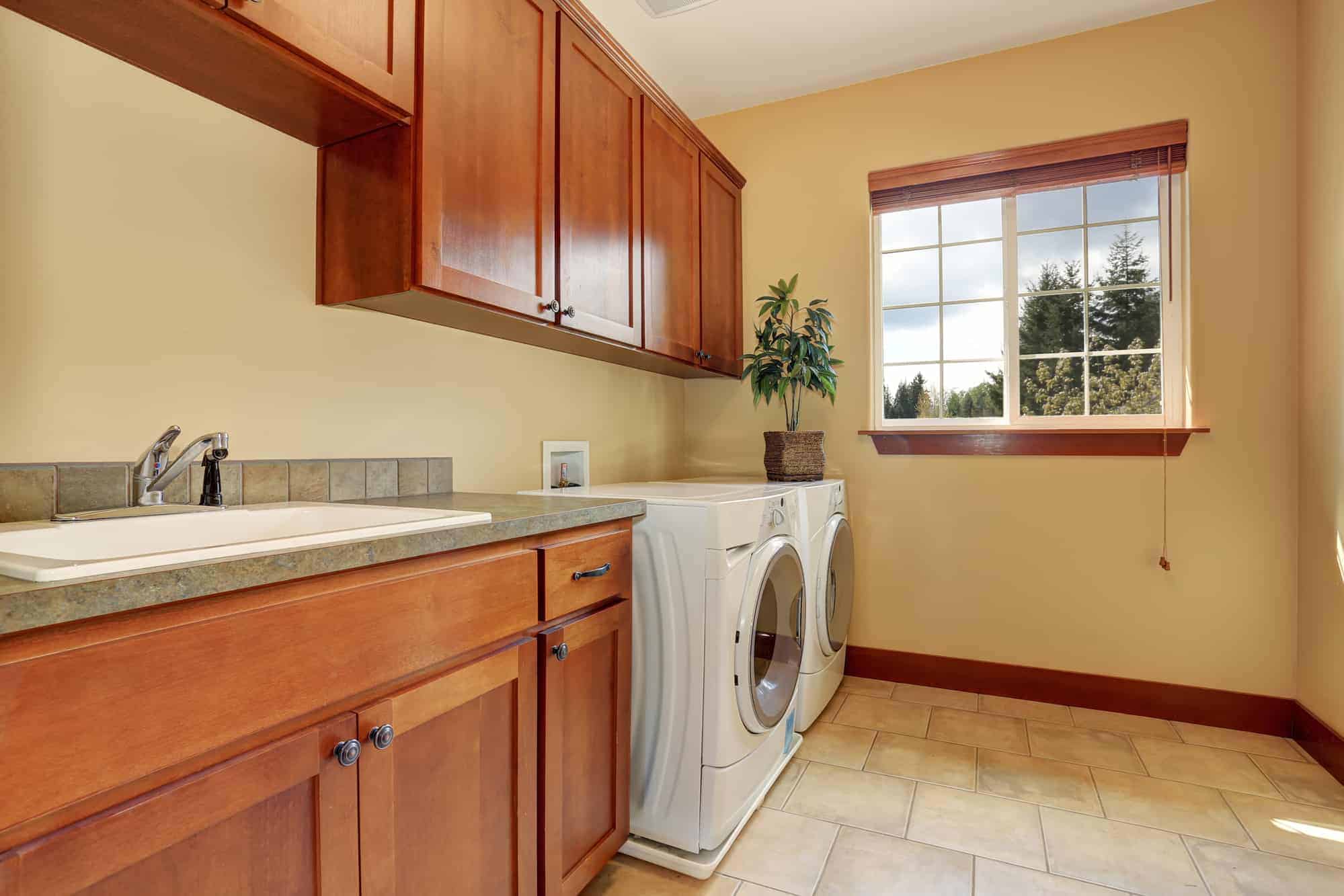

Articles
How To Soundproof Laundry Room
Modified: January 9, 2024
Want a quieter laundry room? Check out our articles on how to soundproof your laundry room and reduce noise disturbances.
(Many of the links in this article redirect to a specific reviewed product. Your purchase of these products through affiliate links helps to generate commission for Storables.com, at no extra cost. Learn more)
Introduction
Welcome to our comprehensive guide on how to soundproof your laundry room. If you’re tired of the constant noise and disruptions caused by your washing machine and dryer, then you’ve come to the right place. A soundproof laundry room can make doing your laundry a much more peaceful and enjoyable experience.
Laundry rooms are known to generate a significant amount of noise. The loud vibrations and rumblings coming from the machines can easily travel through walls, floors, and ceilings, disturbing other areas of your home. Additionally, the sound of the appliances themselves can be quite bothersome, especially if your laundry room is located near bedrooms or living spaces.
Fortunately, there are various soundproofing techniques and solutions available that can help minimize noise and create a more serene laundry environment. In this article, we will guide you through the process of assessing the noise issues in your laundry room and provide you with practical tips on how to effectively soundproof it.
Before we dive into the specific soundproofing solutions, it’s important to understand that soundproofing is a multi-faceted process. It involves identifying the main sources of noise, evaluating the materials and structures within your laundry room, and implementing targeted measures to reduce sound transmission.
Our goal is to empower you with the knowledge and tools needed to create a laundry room that’s not only functional but also tranquil. So, without further ado, let’s begin assessing the noise issues in your laundry room.
Key Takeaways:
- Transform your laundry room into a peaceful oasis by soundproofing walls, ceilings, and floors. Address gaps, cracks, and appliance noise to create a serene environment for a more enjoyable laundry experience.
- Utilize acoustic panels and soundproof curtains to absorb sound waves and reduce noise reflections, enhancing the effectiveness of your soundproofing efforts. Create a quieter and more enjoyable laundry space.
Read more: How To Soundproof A Living Room
Assessing the Noise Issues in Your Laundry Room
Before you can effectively soundproof your laundry room, it’s crucial to identify the main sources of noise. This will help you determine which areas require the most attention and which soundproofing solutions to implement. Here are a few steps to assess the noise issues in your laundry room:
- Observe and listen: Start by simply spending some time in your laundry room while the machines are running. Take note of any specific noises, vibrations, or echoes that you hear. Pay attention to where the sound seems to be coming from and whether it’s more noticeable in certain areas of the room.
- Check the walls: Examine the walls of your laundry room for any visible cracks, gaps, or weak spots. These can serve as entry points for noise to escape or enter the room. Use your hand to feel for any air drafts or vibrations around windows, outlet covers, and baseboards.
- Inspect the ceiling and floors: Similar to the walls, check the ceiling and floors for any signs of damage or gaps. These areas are often overlooked when it comes to soundproofing, but they play a crucial role in reducing noise transmission. Look for cracks, loose tiles, or poorly sealed edges.
- Measure sound levels: If you want to get a more accurate understanding of the noise levels in your laundry room, you can use a sound meter. These devices measure the decibel level and can help you determine whether the noise exceeds acceptable standards. This information can be useful when comparing the effectiveness of different soundproofing methods.
- Consider neighboring areas: Take into account the adjacent rooms and spaces that may be impacted by the noise from your laundry room. If there are bedrooms, living rooms, or quiet areas nearby, it’s important to prioritize soundproofing strategies that minimize sound transmission through walls and ceilings.
By following these steps, you will gain a better understanding of the specific noise issues in your laundry room. This knowledge will guide you in selecting the most appropriate soundproofing solutions to implement. In the next section, we will explore various soundproofing techniques that can help transform your noisy laundry room into a peaceful oasis.
Identifying Potential Soundproofing Solutions
Once you have assessed the noise issues in your laundry room, it’s time to identify potential soundproofing solutions. There are several effective techniques and materials available that can help reduce noise transmission and create a more peaceful environment. Here are some common soundproofing solutions to consider:
- Soundproofing the walls: One of the most effective ways to soundproof your laundry room is to address the walls. You can start by adding mass to the walls by installing dense materials such as drywall or mass loaded vinyl (MLV). Another option is to use acoustic insulation to absorb and dampen sound vibrations. Additionally, sealing any cracks or gaps with acoustic sealant can help prevent sound leakage.
- Soundproofing the ceiling: The ceiling is another area that can contribute to noise transmission. Installing acoustic panels or ceiling tiles can effectively absorb sound and reduce reverberation. Don’t forget to also check for any gaps or cracks in the ceiling and seal them to minimize sound leakage.
- Soundproofing the floors: If you have a laundry room on an upper floor, addressing floor noise is essential. Consider installing a floating floor system, which involves adding a layer of soundproof underlayment beneath the flooring material. This helps to absorb impact noise and prevent it from traveling to other areas of the house.
- Sealing gaps and cracks: To prevent sound from escaping or entering your laundry room, it’s important to seal any gaps or cracks in the walls, ceilings, and floors. Use acoustic caulk or sealant to fill in any openings around windows, doors, outlets, and baseboards. This will help improve the overall soundproofing performance of the room.
- Soundproofing the door: The door is often a weak point when it comes to soundproofing. Consider replacing a hollow-core door with a solid-core door, which will help block out more noise. Adding weatherstripping around the door frame can also help to create a tighter seal and reduce sound leakage.
- Reducing noise from appliances: While soundproofing the room itself is essential, don’t forget to address the noise generated directly from the appliances. Look for washing machines and dryers that are designed with noise reduction features, such as anti-vibration technology. Additionally, consider placing vibration pads or mats underneath the appliances to absorb and dampen vibrations.
- Installing acoustic panels or soundproof curtains: For a quick and easy solution, you can install acoustic panels or soundproof curtains on the walls. These panels are designed to absorb sound waves and reduce noise reflections, helping to create a more peaceful environment in your laundry room.
Remember, every laundry room is unique, and the most effective soundproofing solutions will vary depending on the specific noise issues. It’s important to assess your laundry room and choose the combination of soundproofing techniques that best suits your needs. In the next sections, we will provide more detailed instructions on how to implement these soundproofing solutions effectively.
Soundproofing the Walls
When it comes to soundproofing your laundry room, addressing the walls is crucial. Sound can easily penetrate through thin walls, causing disturbances in other areas of your home. Here are some effective methods to soundproof the walls in your laundry room:
- Add mass: One of the simplest ways to soundproof the walls is to add mass to them. This can be done by installing an additional layer of drywall or using mass loaded vinyl (MLV), a dense and flexible material specifically designed for soundproofing. Adding mass helps to block and absorb sound vibrations, reducing noise transmission.
- Use acoustic insulation: Another effective method is to incorporate acoustic insulation into the walls. Acoustic insulation is designed to absorb sound waves and prevent them from passing through the walls. It can be installed inside the wall cavities or in the form of specialized soundproofing batts or rolls.
- Seal cracks and gaps: To minimize sound leakage, it’s important to seal any cracks or gaps in the walls. Use acoustic caulk or sealant to fill in openings around windows, outlets, and any other areas where sound might seep through. This will help create a tighter seal and improve the overall soundproofing performance.
- Install resilient channels: Resilient channels are metal strips designed to decouple the drywall from the wall structure, reducing the transfer of sound vibrations. By attaching the drywall to resilient channels instead of directly to the wall, the channels help to isolate the wall surface and absorb vibrations more effectively.
- Double-layer drywall: For maximum soundproofing, consider installing double-layer drywall on your walls. This involves attaching two layers of drywall with a damping compound or green glue sandwiched between them. The additional layer helps to further block sound transmission and reduce noise levels.
When implementing these soundproofing techniques, it’s important to ensure that the walls are properly secured and tightly sealed. Pay attention to details such as electrical outlets and light switches, as these can be common areas where sound can leak through. Additionally, if you’re not confident in your soundproofing abilities, it’s always a good idea to consult with a professional to ensure the best results.
Remember, soundproofing the walls is just one aspect of creating a more peaceful laundry room. In the next sections, we will explore additional soundproofing methods for the ceiling, floors, and other areas of your laundry room.
Soundproofing the Ceiling
When it comes to soundproofing your laundry room, don’t forget about the ceiling. Sound can easily travel through the ceiling and disturb other areas of your home. Here are some effective methods to soundproof the ceiling in your laundry room:
- Install acoustic panels: One of the most popular and effective methods for soundproofing the ceiling is to install acoustic panels. These panels are designed to absorb sound waves and reduce noise reflections. They come in various shapes and sizes and can be easily mounted on the ceiling using adhesive or screws.
- Use ceiling tiles: Another option is to use acoustic ceiling tiles. These tiles are specifically designed to dampen sound vibrations and reduce reverberation. They can be installed directly onto the ceiling surface, providing an effective barrier against noise transmission.
- Seal gaps and cracks: As with any soundproofing project, it’s important to seal any gaps or cracks in the ceiling. Inspect the area for any visible openings and use acoustic caulk or sealant to fill them in. This will help prevent sound from leaking through and improve the overall soundproofing performance of the ceiling.
- Insulate the ceiling: Adding insulation to the ceiling can also help reduce noise transmission. Install acoustic insulation in the ceiling cavities or use specially designed soundproofing materials, such as acoustic insulation boards. This additional layer of insulation helps absorb sound waves and minimize their impact on other areas of the home.
- Consider a suspended ceiling: If you’re dealing with excessive noise from above your laundry room, consider installing a suspended ceiling. This involves creating a secondary ceiling below the existing one, which helps to create an air gap and provides additional sound insulation. Use acoustic tiles or panels for the suspended ceiling for optimal soundproofing.
It’s important to note that the effectiveness of these soundproofing methods can vary depending on the type of noise you’re dealing with and the specific characteristics of your laundry room. Experiment with different combinations of techniques to achieve the best results for your space.
Remember, soundproofing the ceiling is just one aspect of creating a more peaceful laundry room. In the next sections, we will explore additional soundproofing methods for the walls, floors, and other areas of your laundry room.
Read more: How To Finish Laundry Room
Soundproofing the Floors
When it comes to soundproofing your laundry room, addressing the floors is an important step to minimize noise transmission. Here are some effective methods to soundproof the floors in your laundry room:
- Floating floors: Installing a floating floor system is one of the most effective ways to soundproof your laundry room’s floors. This involves adding a layer of soundproof underlayment beneath the flooring material. The underlayment helps to absorb impact noise and prevents it from traveling to other areas of the house. Cork and rubber underlayment are popular choices for their sound-dampening properties.
- Carpet and rug placement: Carpeting your laundry room or adding rugs can help absorb sound vibrations and reduce noise transmission. Opt for thick, dense carpets or rugs with soundproof padding underneath. This will help create a cushioning effect and minimize the impact of footsteps and machine vibrations.
- Use soundproof floor mats: Consider using soundproof floor mats under your washing machine and dryer. These mats are designed to absorb vibrations and prevent them from transferring to the floor and causing noise. Look for mats specifically designed for soundproofing, such as rubber or foam-based mats.
- Seal gaps and cracks: As with any soundproofing project, it’s important to seal any gaps or cracks in the floors. Inspect the area for any visible openings and use acoustic caulk or sealant to fill them in. This will help prevent sound from leaking through and improve the overall soundproofing performance of the floors.
- Add area rugs or carpet runners: For an additional layer of soundproofing, consider placing area rugs or carpet runners in high-traffic areas of your laundry room. These soft materials absorb sound and reduce noise reflections, helping to create a more peaceful environment.
When implementing these soundproofing techniques, it’s important to consider the type of flooring material you have in your laundry room. Different flooring types may require specific soundproofing methods or materials. Additionally, if you live in an apartment or have neighbors below you, it’s important to soundproof both the ceiling and floors to minimize noise transmission.
Remember, soundproofing the floors is just one aspect of creating a more peaceful laundry room. In the next sections, we will explore additional soundproofing methods for the walls, ceiling, and other areas of your laundry room.
Use soundproofing materials like acoustic panels or foam to absorb and reduce noise in the laundry room. Seal any gaps or cracks in the walls, windows, and doors to prevent sound from escaping.
Sealing Gaps and Cracks
One crucial step in soundproofing your laundry room is to seal any gaps and cracks in the room. These gaps and cracks can serve as entry points for noise to escape or enter the room. Here are some effective methods to seal gaps and cracks and improve the overall soundproofing performance:
- Inspect the room: Carefully examine the walls, ceiling, and floors of your laundry room for any visible gaps or cracks. Pay close attention to areas around windows, doors, electrical outlets, and baseboards, as these are common places where sound can leak through.
- Use acoustic caulk or sealant: Acoustic caulk or sealant is specifically designed to reduce sound transmission. Use it to seal gaps and cracks in the walls, ceiling, and floor. Apply the caulk or sealant along the edges of windows and doors, in between baseboards and walls, and around electrical outlets and switches.
- Weatherstripping: Weatherstripping is an excellent method to seal gaps around doors and windows. By adding weatherstripping to the door frames, you create a tighter seal, preventing sound from escaping or entering the laundry room. Choose weatherstripping materials that are designed for soundproofing purposes.
- Door sweeps: Install door sweeps on the bottom of the door to seal the gap between the door and the floor. Door sweeps prevent sound from traveling through this gap and reduce noise transmission. Choose door sweeps that are made of sound-absorbing materials.
- Use acoustic putty pads: Acoustic putty pads are sticky, pliable pads that can be applied to electrical boxes and outlet covers. They create a tight seal and help prevent sound from leaking through these areas.
Sealing gaps and cracks is a critical step in soundproofing your laundry room. Not only does it help prevent noise leakage, but it also improves the overall energy efficiency of the room. By ensuring that your laundry room is properly sealed, you create a more comfortable and soundproof environment.
Remember, soundproofing is a comprehensive process, and addressing gaps and cracks is just one aspect of it. In the next sections, we will explore additional soundproofing techniques for the door, appliances, and other areas of your laundry room.
Soundproofing the Door
When it comes to soundproofing your laundry room, don’t overlook the importance of soundproofing the door. Doors are often a weak point in terms of noise transmission. Here are some effective methods to soundproof the door and minimize sound leakage:
- Replace with a solid-core door: Hollow-core doors are known for their poor sound-blocking properties. Consider replacing your existing door with a solid-core door, which is denser and better at blocking sound. Solid-core doors have a solid interior, typically made of wood or composite materials, providing better noise insulation.
- Add weatherstripping: Weatherstripping seals the gaps between the door and the door frame, preventing sound from leaking in or out. Install adhesive-backed weatherstripping along the sides and top of the door frame. Make sure to choose weatherstripping specifically designed for soundproofing purposes.
- Use door sweeps: Door sweeps are attached to the bottom of the door, sealing the gap between the door and the floor. They help prevent sound from passing through this gap, reducing noise transmission. Choose door sweeps that have sound-absorbing materials to maximize their effectiveness.
- Apply soundproofing materials: You can enhance the soundproofing performance of your door by applying soundproofing materials directly to the surface. Options include applying mass loaded vinyl (MLV) to the door or adding a layer of soundproofing foam or acoustic panels to the door’s interior surface.
- Consider adding a door soundproofing blanket: If you’re looking for a temporary solution or additional soundproofing, you can use a door soundproofing blanket. These blankets are specifically designed to hang over the door, helping to absorb sound and reduce noise reflections.
By implementing these soundproofing techniques on your door, you can significantly improve the sound-blocking properties of your laundry room. Remember that the effectiveness of these methods may vary depending on the composition and structure of your door.
It’s important to note that soundproofing the door is just one aspect of creating a more peaceful laundry room. In the next sections, we will explore additional soundproofing techniques for reducing noise from appliances, installing acoustic panels, and other areas of your laundry room.
Reducing Noise from Appliances
When soundproofing your laundry room, it’s important to address the noise directly produced by the appliances themselves. Washing machines and dryers can generate significant vibrations and noise, which can be disruptive. Here are some effective methods to reduce noise from appliances:
- Choose appliances with noise reduction features: When purchasing new appliances, look for washing machines and dryers that have noise reduction features. These may include anti-vibration technology, heavy-duty insulation, or specialized motor mounts designed to minimize vibration and noise.
- Install vibration pads or mats: Place vibration pads or mats underneath your washing machine and dryer to absorb and dampen vibrations. These pads act as a barrier between the appliances and the floor, reducing the transfer of vibrations and minimizing noise transmission.
- Isolate the appliances: Another method to reduce noise from appliances is to isolate them from the surrounding structures. Use rubber isolation pads beneath the feet or install a specialized anti-vibration platform to separate the appliances from the floor or countertop they are placed on.
- Check leveling: Ensure that your appliances are properly leveled. If they are not, it can lead to increased vibrations and noise. Refer to the manufacturer’s instructions to level the appliances correctly, using adjustable feet or leveling tools.
- Enclose the appliances: Creating an enclosure for your appliances can help contain the noise. Constructing a soundproof box or cabinet around the appliances, using soundproof materials such as mass loaded vinyl (MLV) or acoustic foam, can significantly reduce noise transmission.
- Utilize noise isolation techniques: To further reduce noise, consider implementing noise isolation techniques. These can include building a separate room or partition, adding soundproof barriers like curtains or acoustic panels around the appliances, or creating a soundproof enclosure within the laundry room.
By implementing these methods to reduce noise from your appliances, you can create a more peaceful and enjoyable laundry experience. Remember to choose the technique that best suits your needs and take into account the specific attributes and requirements of your appliances and laundry room.
While reducing noise from appliances is a significant step in soundproofing your laundry room, there are still other areas to address. In the next section, we will discuss the installation of acoustic panels or soundproof curtains to further enhance the soundproofing of your laundry room.
Read more: How To Add A Laundry Room
Installing Acoustic Panels or Soundproof Curtains
When it comes to soundproofing your laundry room, acoustic panels and soundproof curtains can greatly enhance the effectiveness of other soundproofing methods. These solutions are designed to absorb sound waves and reduce noise reflections, creating a more peaceful and serene environment. Here’s how you can install acoustic panels or soundproof curtains:
- Acoustic panels: Acoustic panels are made of sound-absorbing materials, such as foam or fiberglass, that help to dampen sound vibrations and reduce noise. They come in various sizes and shapes and can be easily installed on the walls of your laundry room. Measure the dimensions of your walls and select panels that fit the space. Install the panels using adhesive or mounting brackets, following the manufacturer’s instructions.
- Soundproof curtains: Soundproof curtains are designed with multiple layers of sound-dampening materials to block and absorb noise. They can be installed on windows or used as room dividers. Measure the dimensions of your windows or desired area and choose soundproof curtains that fit. Install the curtains using curtain rods or track systems, following the manufacturer’s instructions.
- Combining panels and curtains: For optimal soundproofing, consider combining the use of both acoustic panels and soundproof curtains. This combination maximizes the absorption and blocking of sound waves, providing a more effective barrier against noise. Place acoustic panels on the walls and use soundproof curtains on windows or as room dividers to create a comprehensive soundproofing setup.
- Strategic placement: When installing acoustic panels or soundproof curtains, consider the strategic placement for maximum effectiveness. Focus on areas where noise transmission is the highest, such as walls adjacent to bedrooms or living spaces, and windows facing outside sources of noise. Covering these areas with soundproofing materials will help to mitigate sound leakage and create a more serene environment.
Both acoustic panels and soundproof curtains offer versatile and customizable options for soundproofing your laundry room. They are relatively easy to install and can greatly enhance the overall effectiveness of your soundproofing efforts.
Remember to choose panels and curtains that are specifically designed for soundproofing and follow the manufacturer’s instructions for proper installation. By incorporating these solutions, you can significantly reduce noise transmission and transform your laundry room into a quieter and more enjoyable space.
In the next section, we will conclude our guide on soundproofing your laundry room and provide a summary of the key points discussed.
Conclusion
Creating a soundproof laundry room can make a world of difference in reducing noise disruptions and enhancing the overall tranquility of your home. By implementing the right soundproofing techniques and solutions, you can transform your laundry room into a peaceful oasis where you can do your laundry without the constant disturbances of vibrating machines and noisy appliances.
In this comprehensive guide, we’ve covered various methods for soundproofing your laundry room, targeting different areas of concern. We started by assessing the noise issues in your laundry room, identifying potential soundproofing solutions, and then delving into specific areas such as the walls, ceiling, floors, gaps, and cracks.
We explored methods to soundproof the walls, including adding mass, using acoustic insulation, and sealing gaps and cracks. Soundproofing the ceiling involved installing acoustic panels or tiles, sealing gaps, and insulating the ceiling. Soundproofing the floors focused on using floating floor systems, placing carpet or rugs, and sealing gaps.
Addition, we discussed the importance of sealing gaps and cracks throughout the laundry room, as well as soundproofing the door with solid-core doors, weatherstripping, and door sweeps. We covered reducing noise from appliances through choosing appliances with noise reduction features, using vibration pads or mats, and isolating the appliances.
Finally, we explored the installation of acoustic panels or soundproof curtains to further enhance soundproofing efforts. These solutions absorb sound waves and minimize noise reflections, creating a more serene laundry room environment.
Remember that soundproofing is a multi-faceted process, and the effectiveness of the methods may vary depending on factors such as the type of noise, construction materials used, and the specific layout of your laundry room. It’s important to assess your laundry room’s unique needs and choose the combination of soundproofing techniques that work best for you.
With the knowledge and techniques provided in this guide, you’re now equipped to embark on your soundproofing journey. Create a laundry room that not only meets your functional needs but also provides a peaceful and quiet space for doing your laundry. Enjoy a more enjoyable and serene laundry experience!
Frequently Asked Questions about How To Soundproof Laundry Room
Was this page helpful?
At Storables.com, we guarantee accurate and reliable information. Our content, validated by Expert Board Contributors, is crafted following stringent Editorial Policies. We're committed to providing you with well-researched, expert-backed insights for all your informational needs.
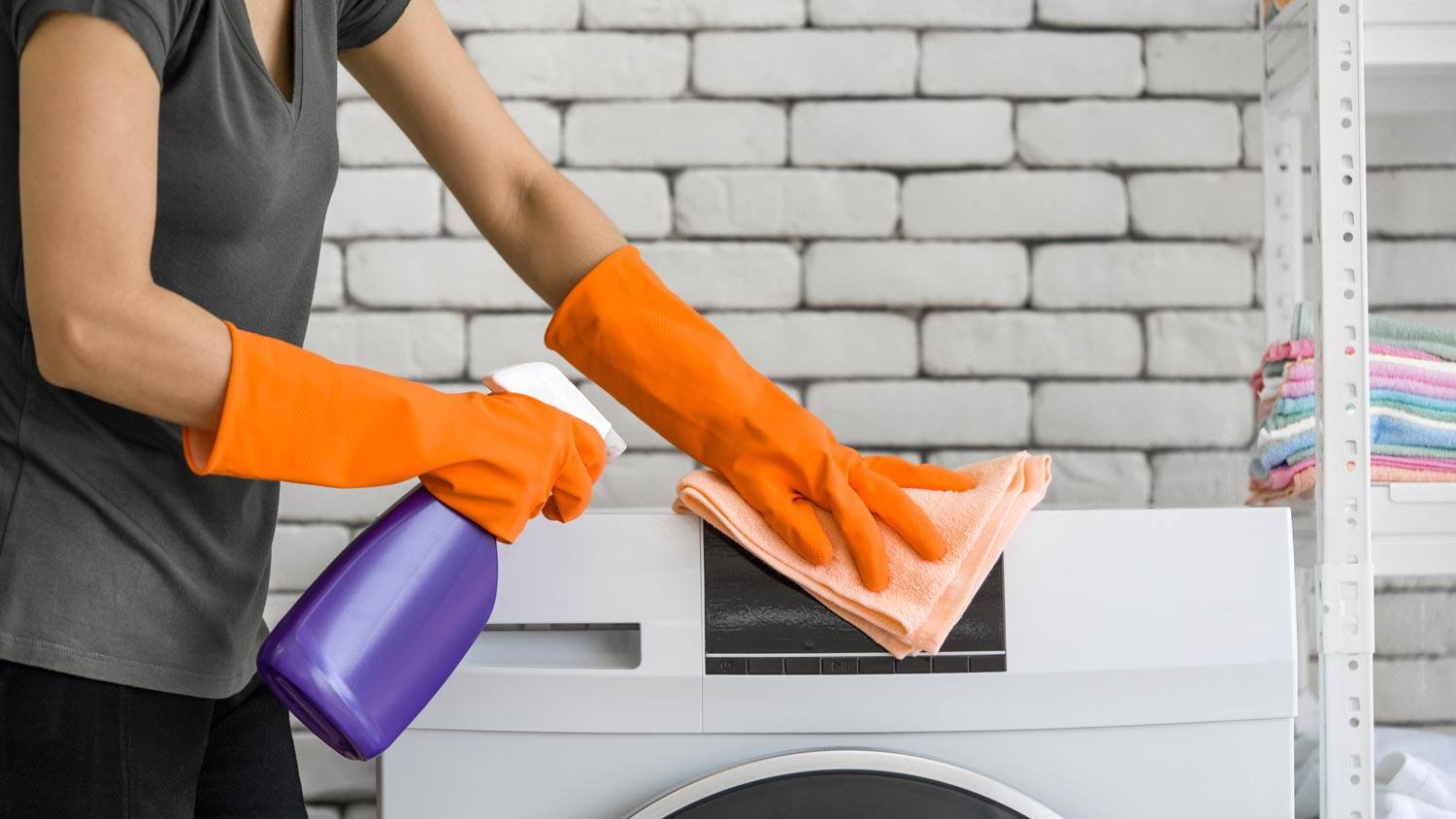
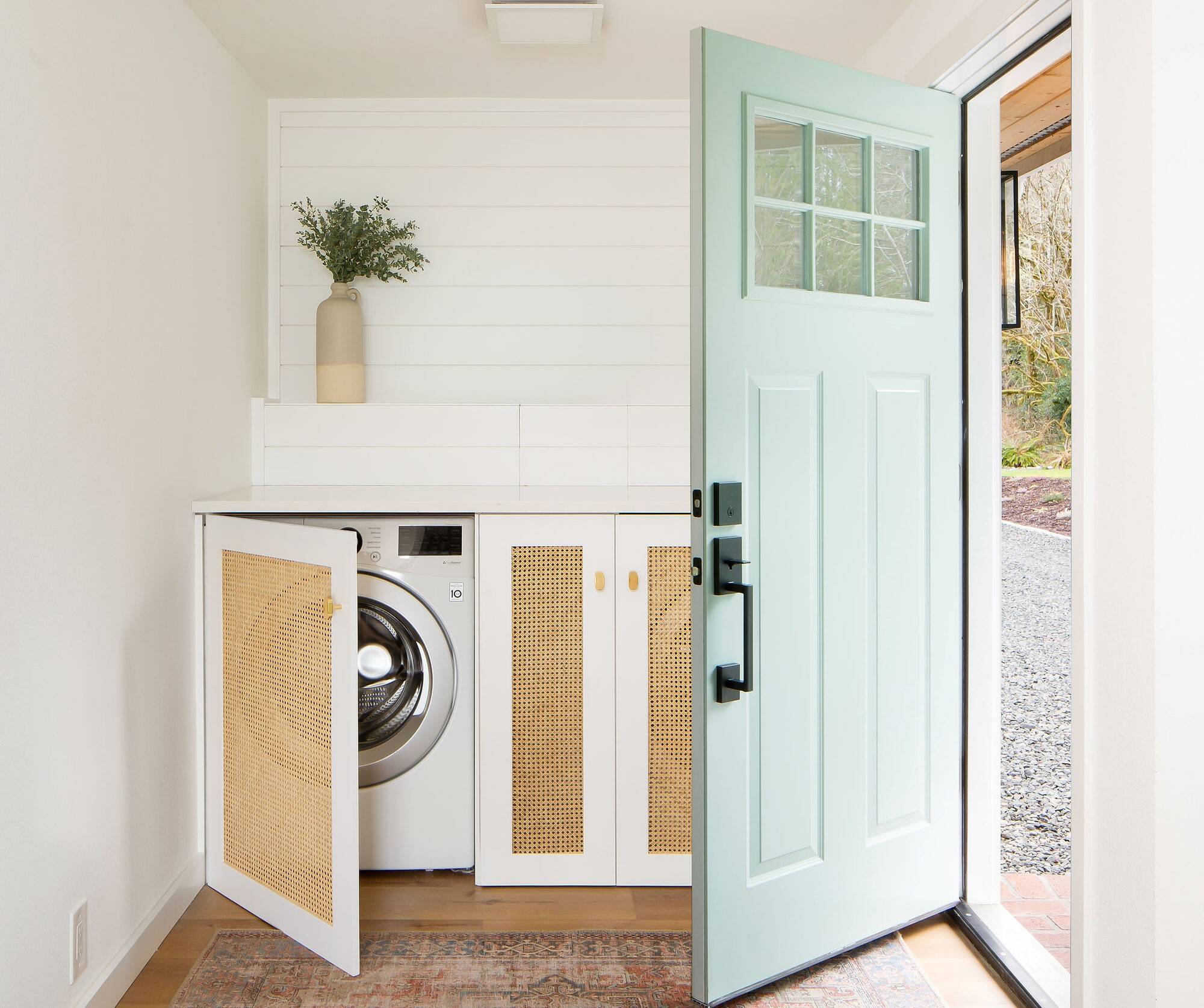
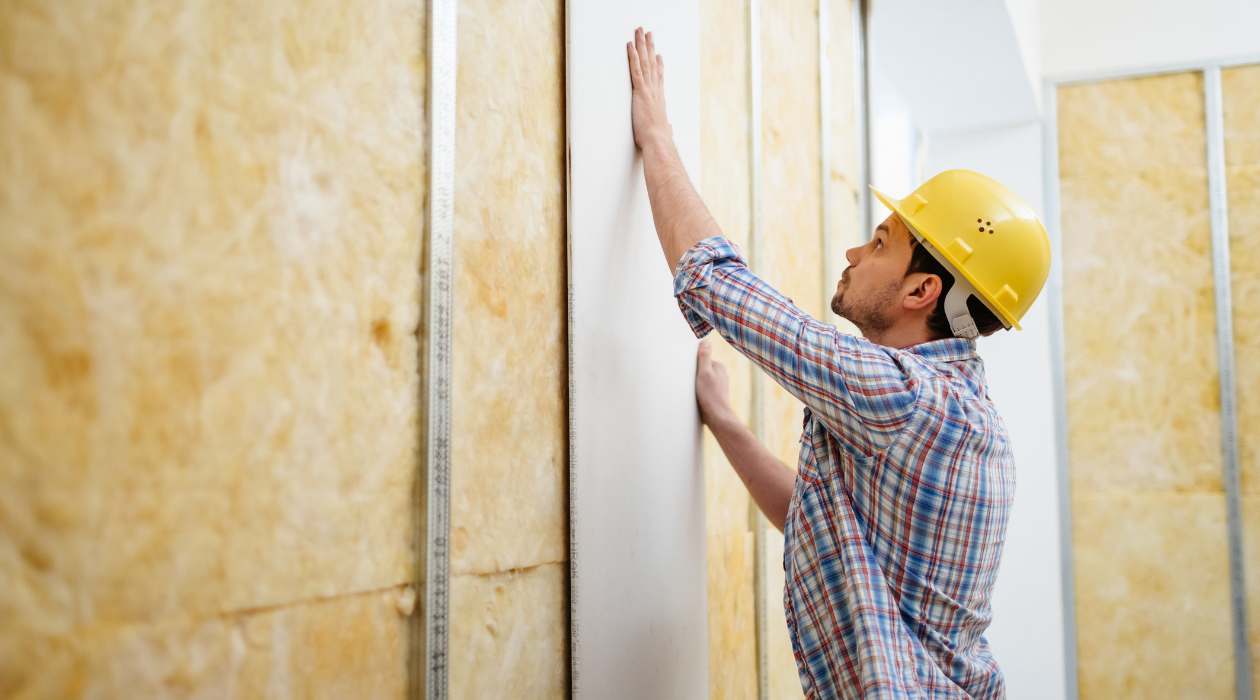
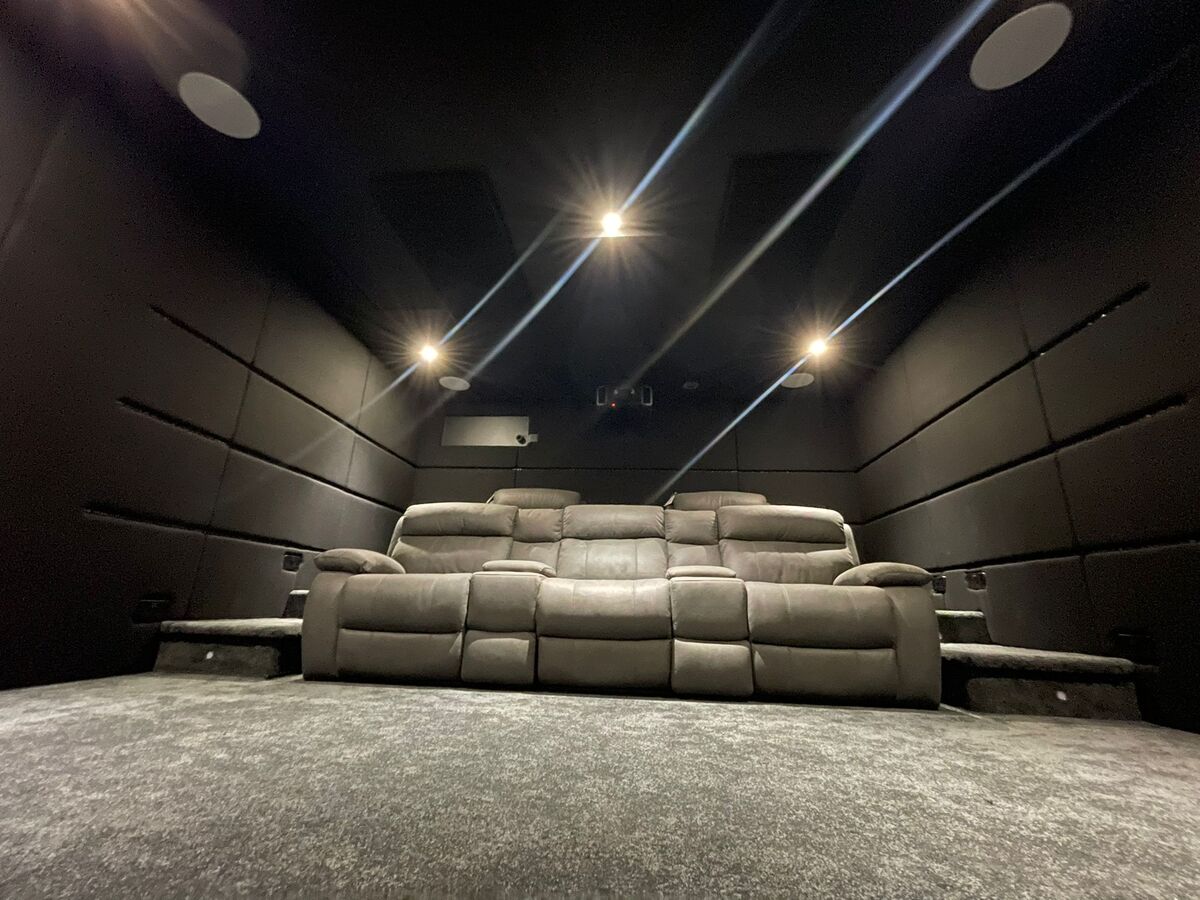
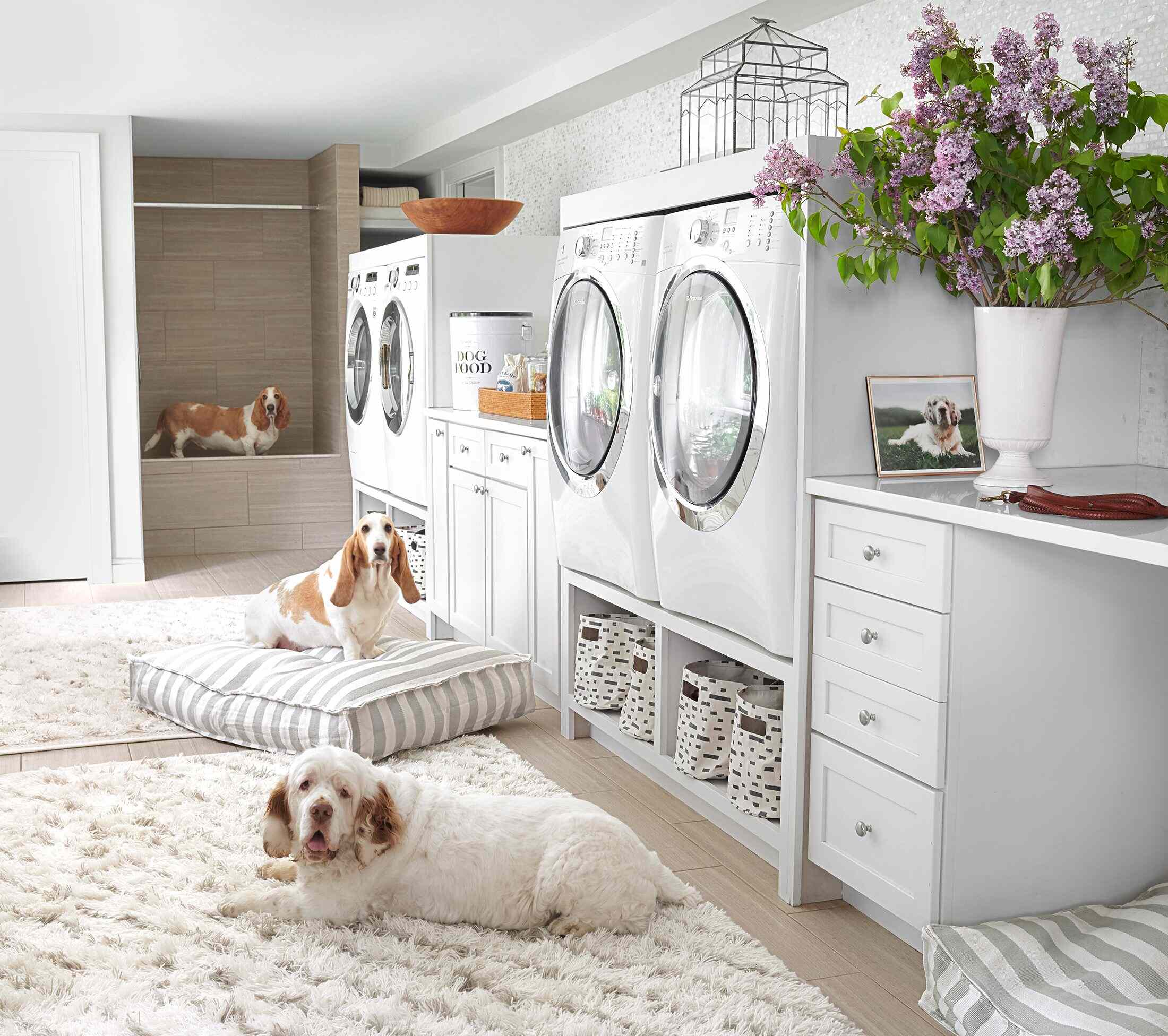
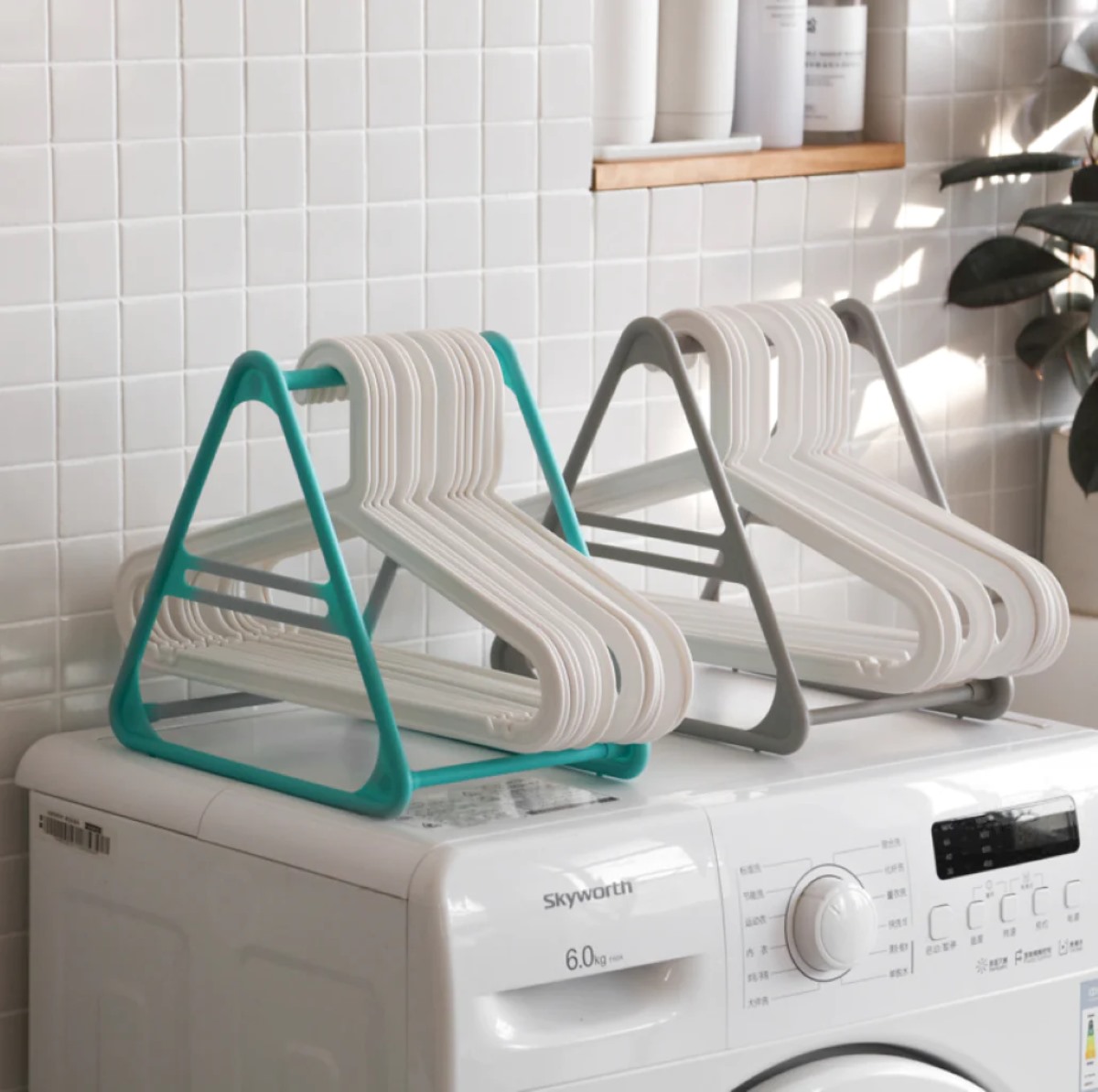
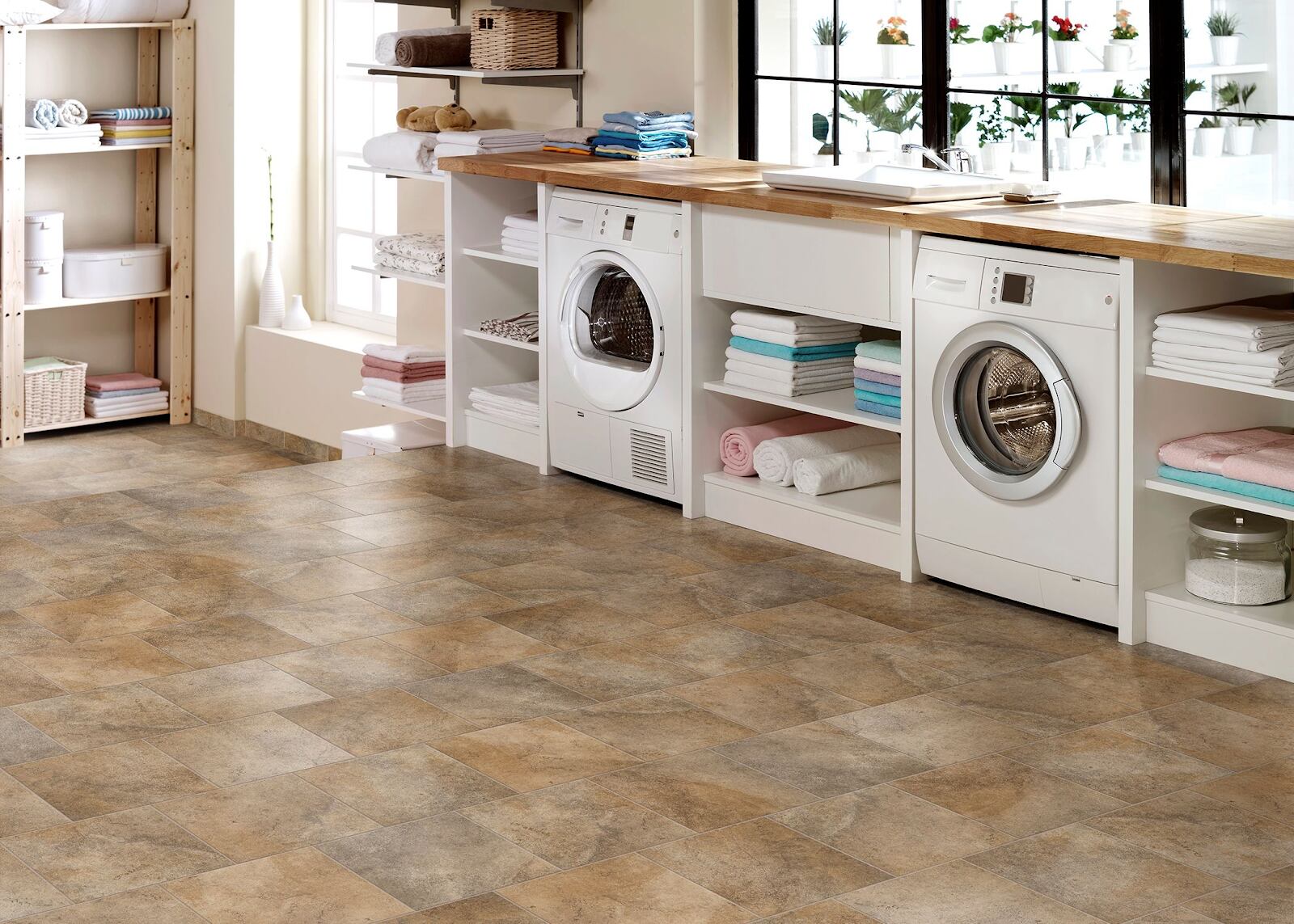
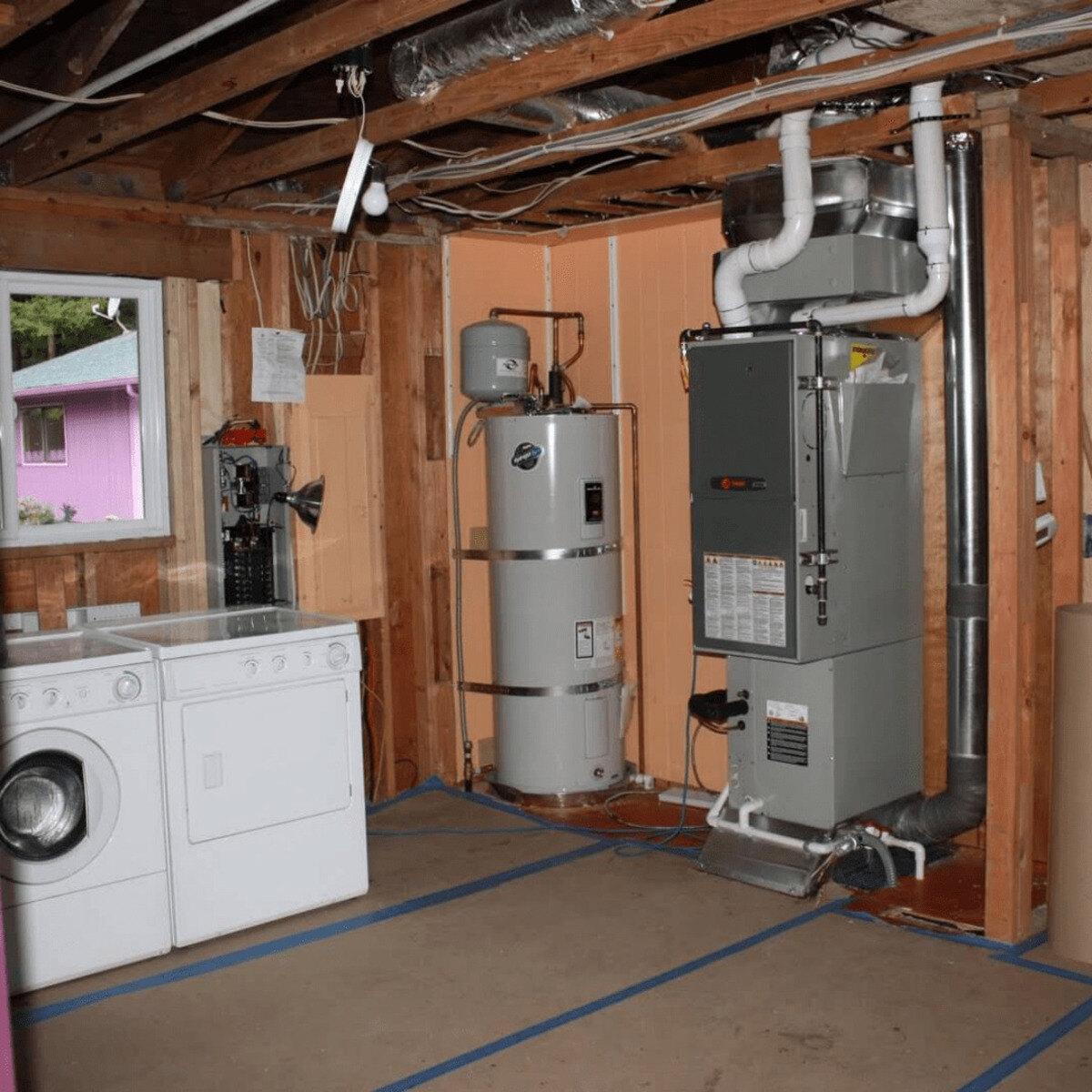
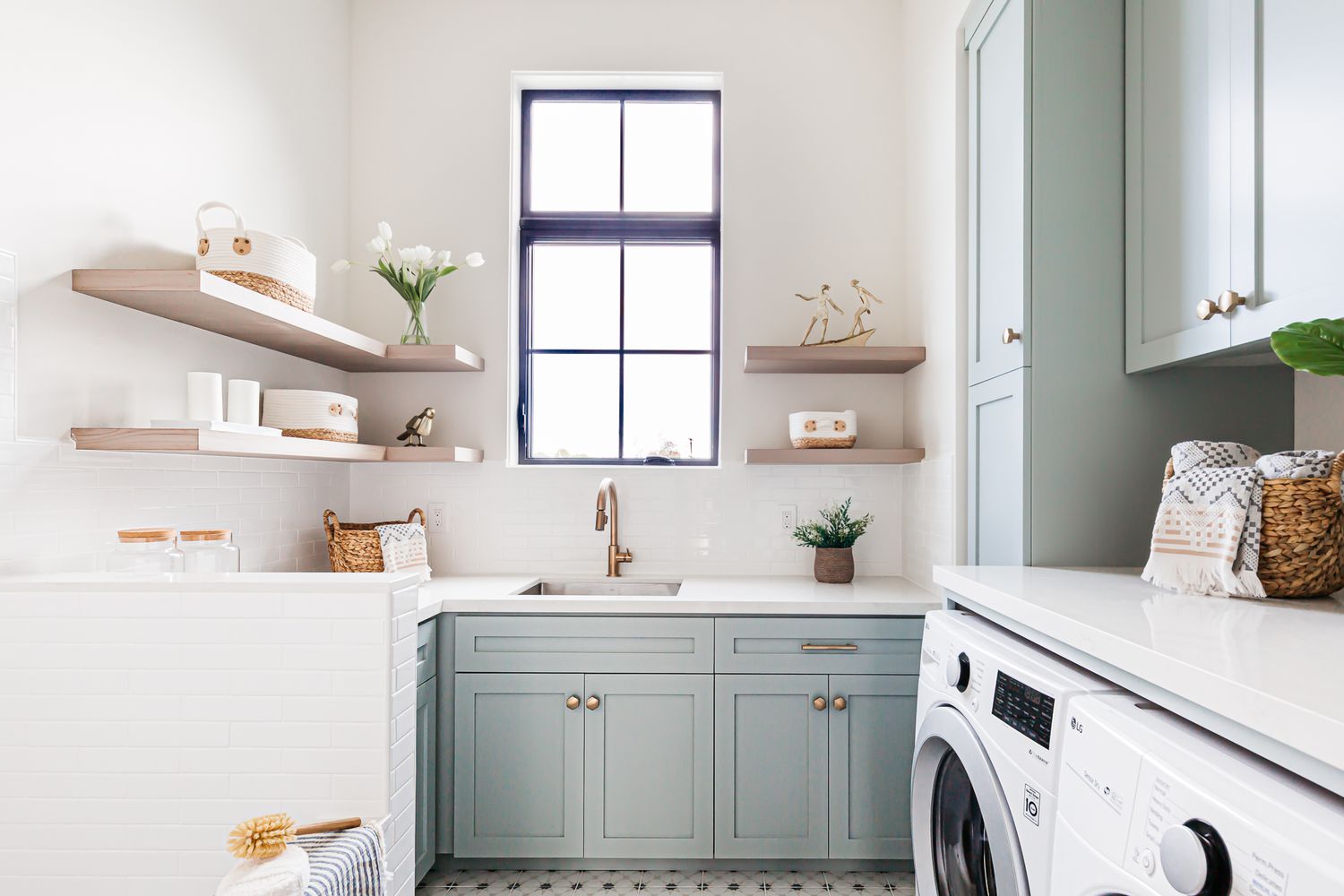
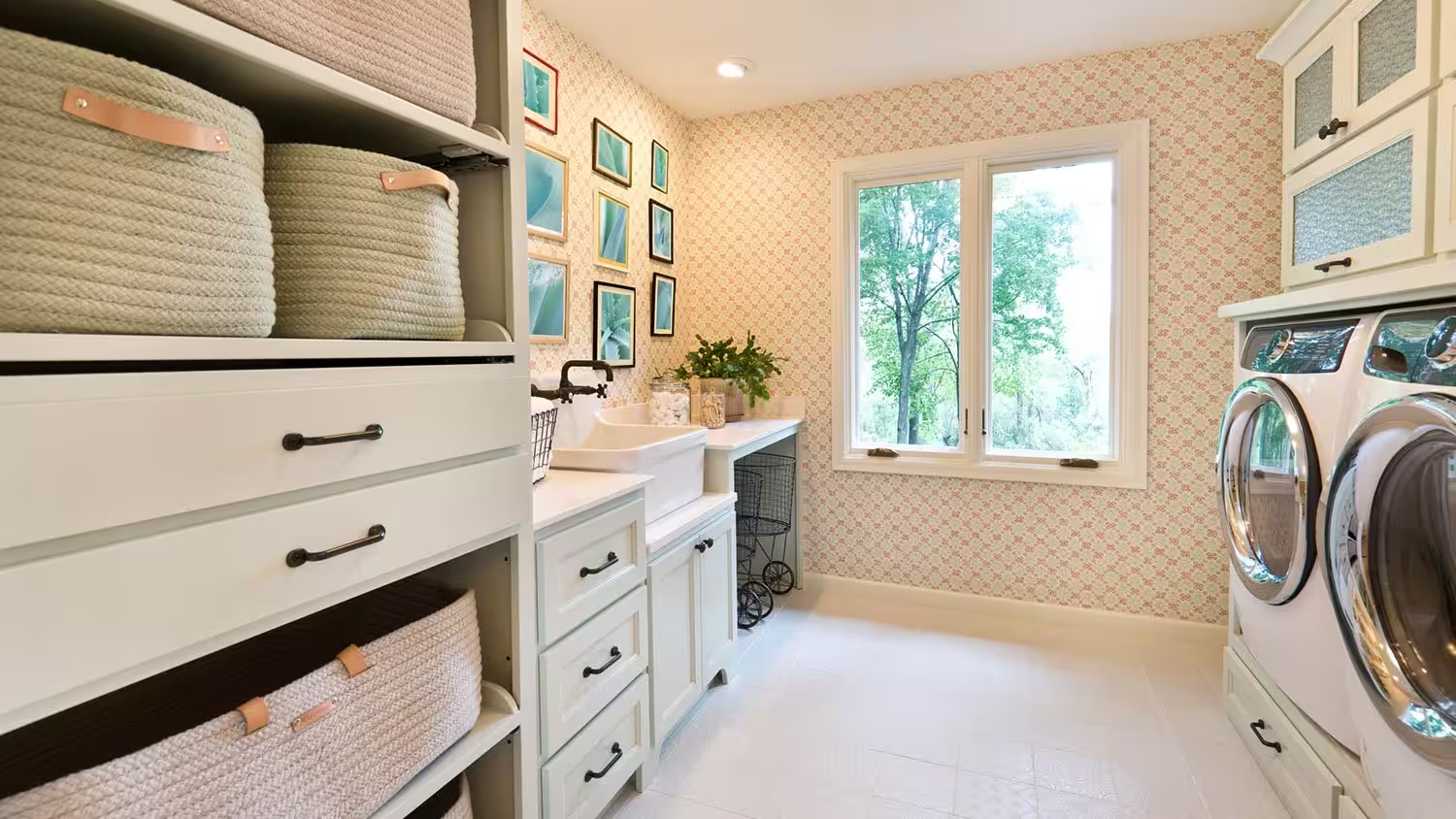
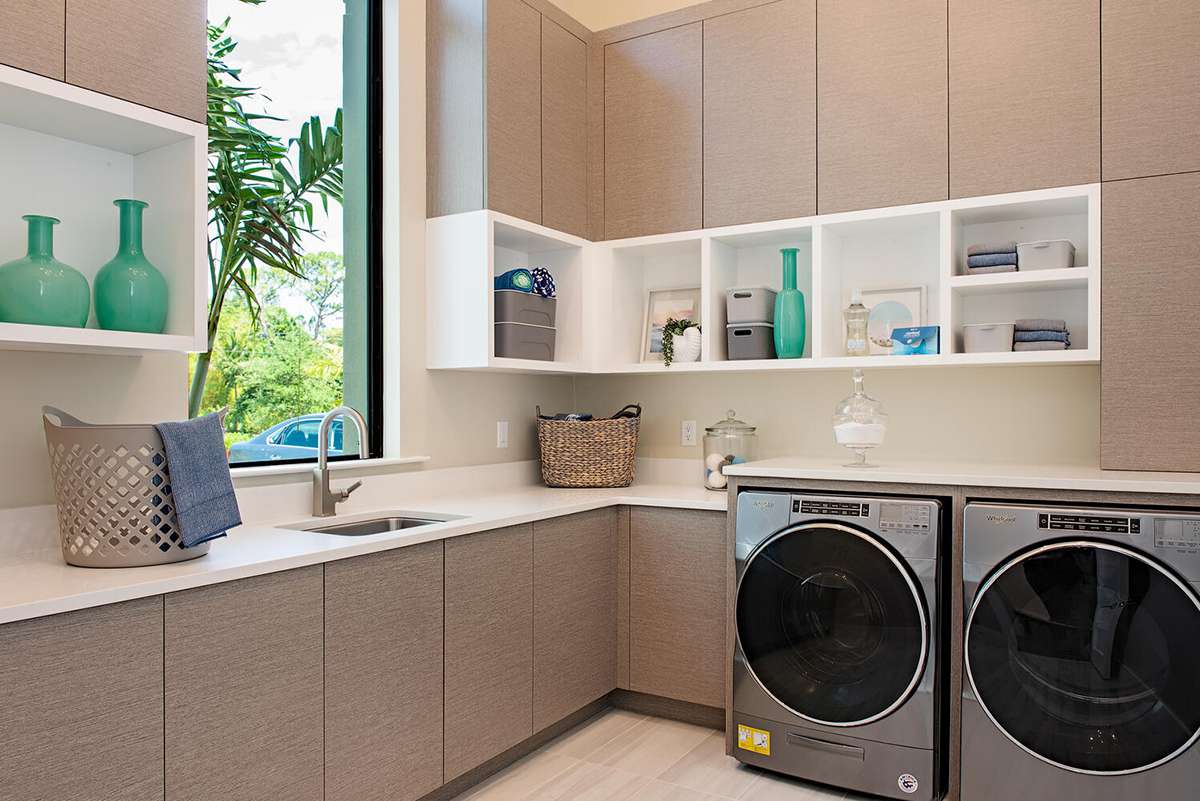
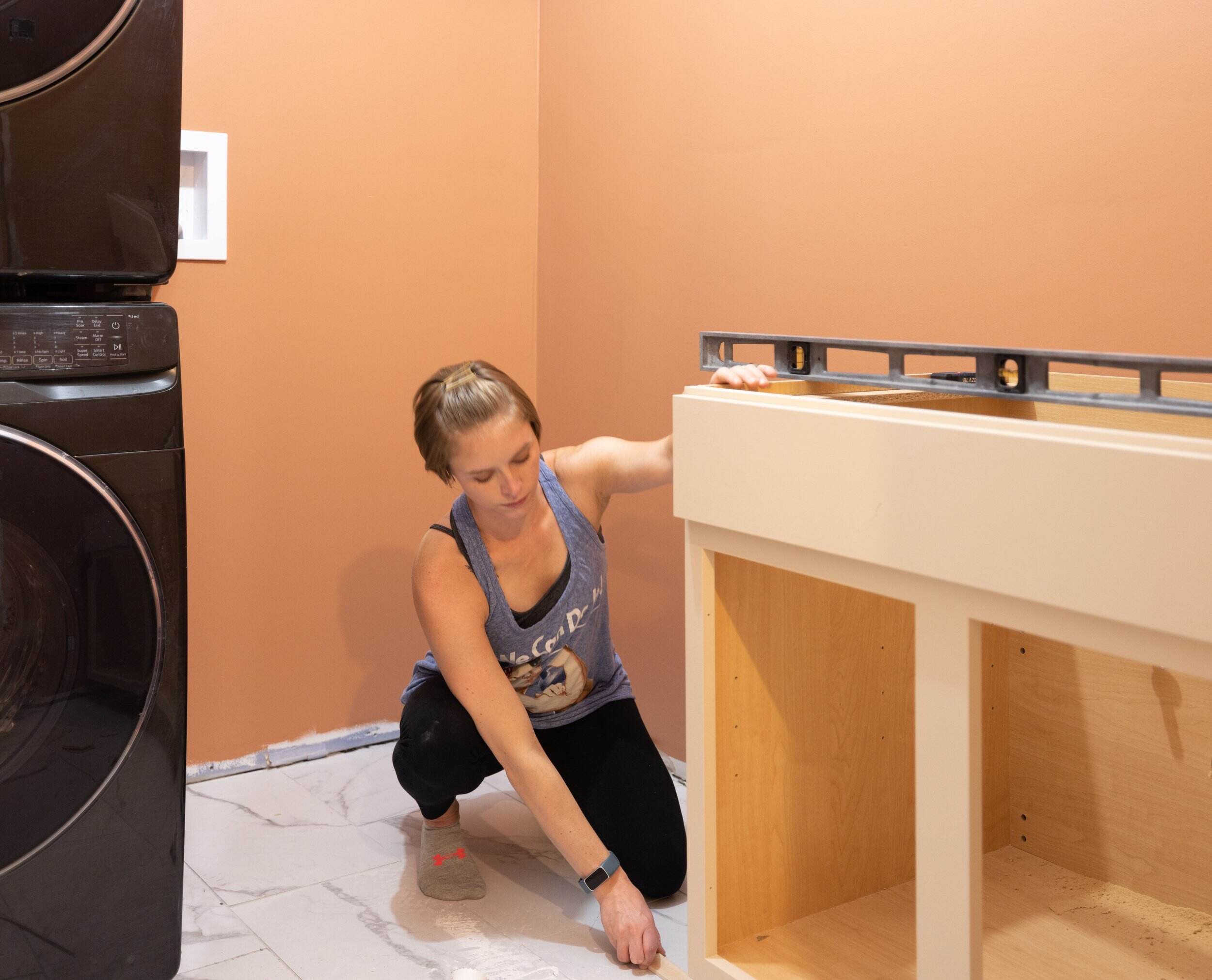
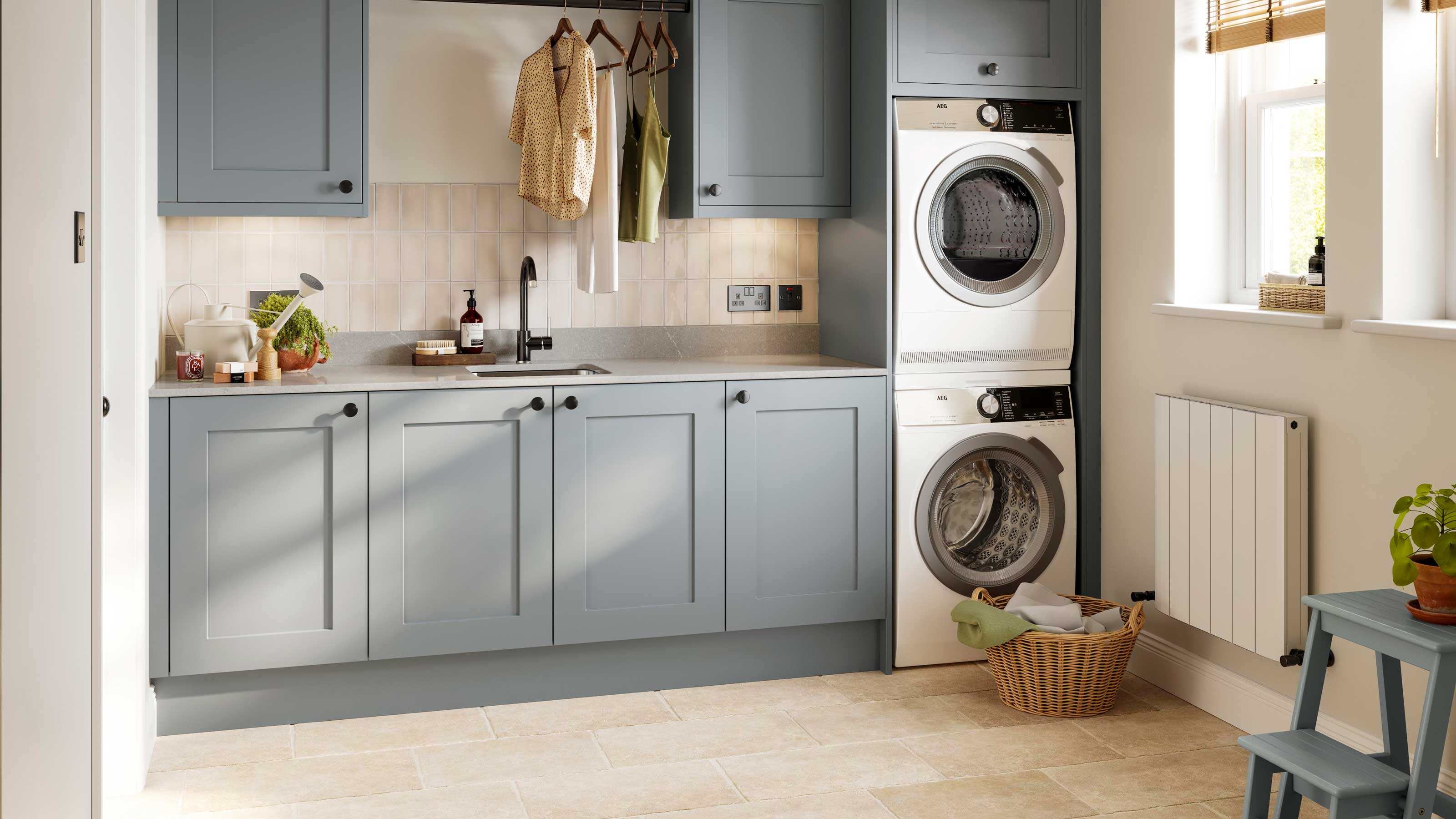

0 thoughts on “How To Soundproof Laundry Room”